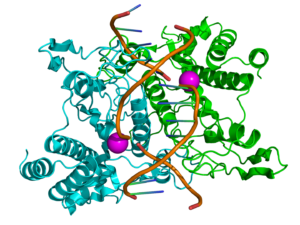Restriction enzymes sometimes get a lot of flak. In the not-so-distant past, they were the workhorses of molecular biology. Restriction enzymes played a huge role in developing early DNA sequencing techniques. They chop DNA in a predictable manner, which makes cutting and pasting genes of interest manageable and relatively easy, enabling the development of genetic engineering and recombination technologies. These technologies are now moving beyond restriction enzymes toward more modern methods, with the most talked-about method being CRISPR /Cas9. As technology continues to advance at such a rapid pace, restriction analysis and other “ancient” technologies feel antiquated. But this is not necessarily the case.
Continue reading “Think Restriction Enzymes are so last decade? Not so fast!”restriction enzymes
Restriction Enzyme Digestion: Capabilities and Resources
Restriction enzymes recognize short DNA sequences and cleave double-stranded DNA at specific sites within or adjacent to these sequences. These enzymes are the workhorse in many molecular biology applications such as cloning, RFLP, methylation-specific restriction enzyme analysis of DNA, etc. Restriction enzymes with enhanced capabilities can help you streamline and shorten these workflows and improve success of restriction enzyme digestion.
A subset of Promega restriction enzymes offer capabilities that include rapid digestion of DNA in 15 minutes or less, ability to completely digest DNA directly in the GoTaq® Green Master Mix, and Blue/White Cloning Qualification which allows for rapid, reliable detection of transformants.
To learn more about restriction enzymes and applications, check out Restriction Enzyme Resource on the web. The resource provides everything from information on restriction enzyme biology to practical information on how to set up and design a restriction enzyme digestion. This resource also contains useful online tools, including the Restriction Enzyme Tool, to help you use enzymes more effectively. It helps you choose the best reaction buffer for double digests, find the commercially available enzyme that cuts your sequence of interest, find compatible ends, and search for specific information on cut site, overhang isoschizomers and neoschizomers by enzyme name.
For added convenience, you can download the mobile app available for iOS devices and use the Restriction Enzyme Tool to plan your next digest.
For additional information regarding Restriction Enzyme Digest, reference the supplementary video below.


